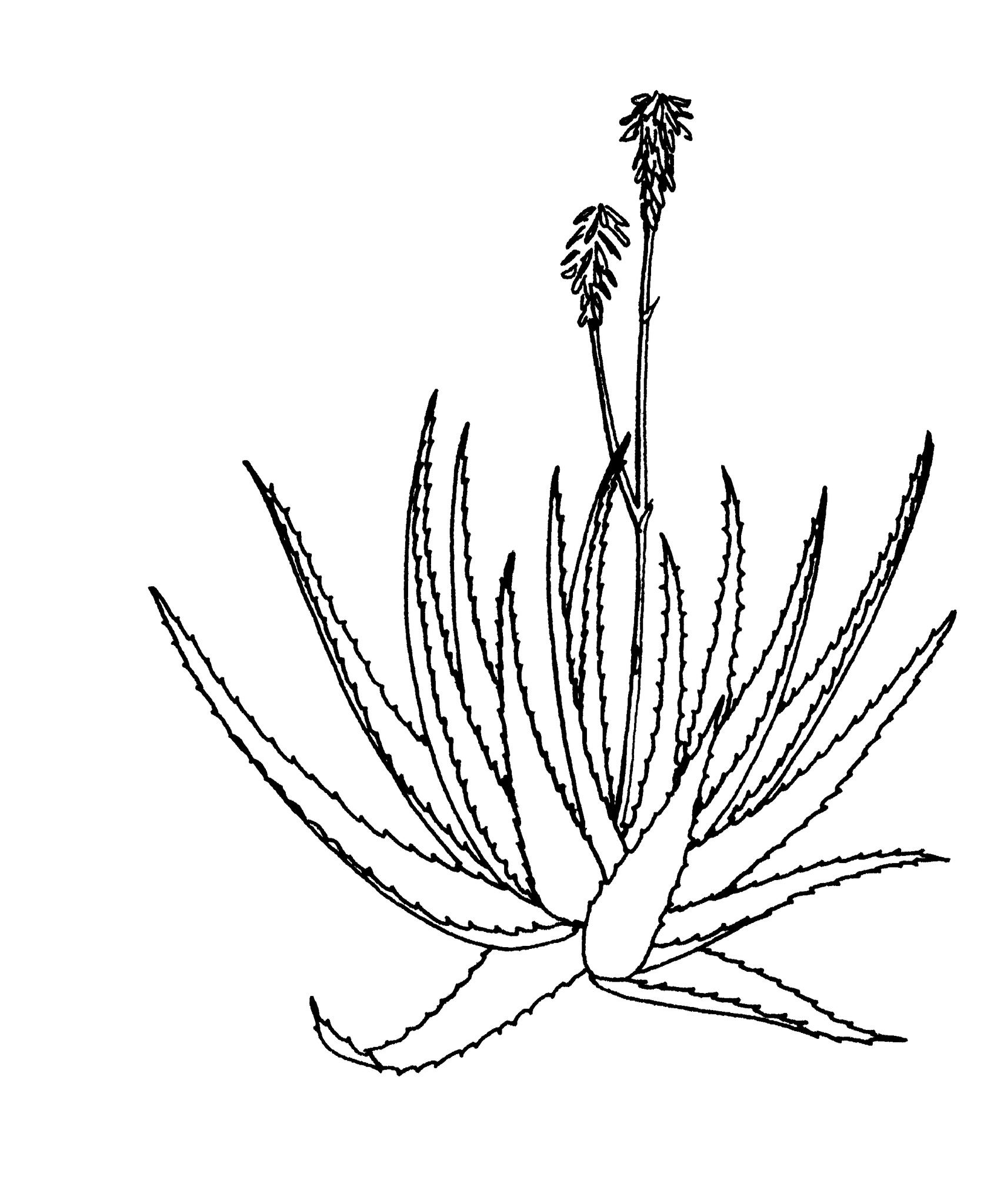
Plants stemless, suckering to form dense clumps. Leaves in a dense rosette, numerous (more than 10), lanceolate, 25-50 cm long, 4.5-7 cm wide, erect to spreading, pale green to grey and waxy, concolorous or with a few white spots on both surfaces; margins with firm teeth 1.5-3 mm long, 10-20 mm apart. Inflorescence to 100 cm long, 1-2 branched; individual flower stalks 4-5 mm long; perianth 28-30 mm long, yellow or pale orange. Syn. A. barbadensis Mill.
Widely used since ancient times for the putative healing nature of the fresh sap (Kent 1979).The species is now widely grown around the world and naturalised in many places. Limited plantations have been established in Australia; however, the species is commonly encountered in gardens, particularly those dedicated to herbs.
Arabian Peninsula.
Two varieties are recognised. The variety officinalis is more commonly sold as the 'true' Aloe vera.
var. officinalis (Forsk.) Bak. Arabian Peninsula has pale green leaves with numerous white spots. Perianth orange.This form is the more commonly grown in Australia.
var. vera Arabian Peninsula has waxy grey leaves, unspotted or with a few white spots. Perianth yellow.This form is the preferred one for medicinal use.
A. aristata Haw. from S Africa is stemless, solitary or suckering to form a dense clump. Leaves in a dense rosette, numerous (more than 10), narrow-lanceolate, 8-10 cm long, 1-1.5 cm wide, incurved to spreading, green with scattered white spots, with a few soft spines on lower surface near apex; margins with soft teeth 1-2 mm long, 1-2 mm apart. Inflorescence to 50 cm long, simple or 2-6- branched; individual flower stalks 30-35 mm long; perianth 38-40 mm long, pinkred. A small species best suited to pot culture.Will tolerate frost if protected.
A. humilis (L.) Mill. from S Africa is stemless, suckering to form a dense clump. Leaves in a dense rosette, numerous (more than 10), ovate-lanceolate, 7.5-10 cm long, 1.2-1.8 cm wide, spreading to incurved, waxy blue grey-green, with a few spines on both surfaces; margins with soft teeth, 1-3 mm long, 2-7 mm apart. Inflorescence to 35 cm long, simple; individual flower stalks 25-35 mm long; perianth 35-40 mm long, orange.A small species best suited to pot culture.
Source: (2005). Asphodelaceae. In: . Horticultural Flora of South-eastern Australia. Volume 5. Flowering plants. Monocotyledons. The identification of garden and cultivated plants. University of New South Wales Press.
